Star Trek: Discovery’s ‘Choose Your Pain’ Finally Feels Like Star Trek; Season 1 Episode 5

At long last, we’re getting a confrontation with ethics, with science, and with human frailty, not just the Federation at war.
“You are… six years old. You are weak and helpless! You cannot… hurt me!”
–Captain Picard, a badass, while being tortured
With the Federation immersed in an all-out war with the Klingons, the spirit of exploration has been all but missing from Star Trek: Discovery through the first four episodes. Captains, crews, and even an admiral all met their demise with little pause for mourning, and the ideals of Starfleet have been repeatedly shoved aside in favor of doing whatever’s necessary to obtain the desired outcome. But for the first time since this new incarnation of Star Trek premiered, the ultimate vision of Gene Roddenberry has been on display. When it mattered most, it wasn’t the commanding officer who steered the ship along the path of righteousness, but the crewmembers themselves, acting of their own volition. It was a triumph for the spirit of Star Trek: finding a way to do the smart thing in a way that makes you proud of who you are.
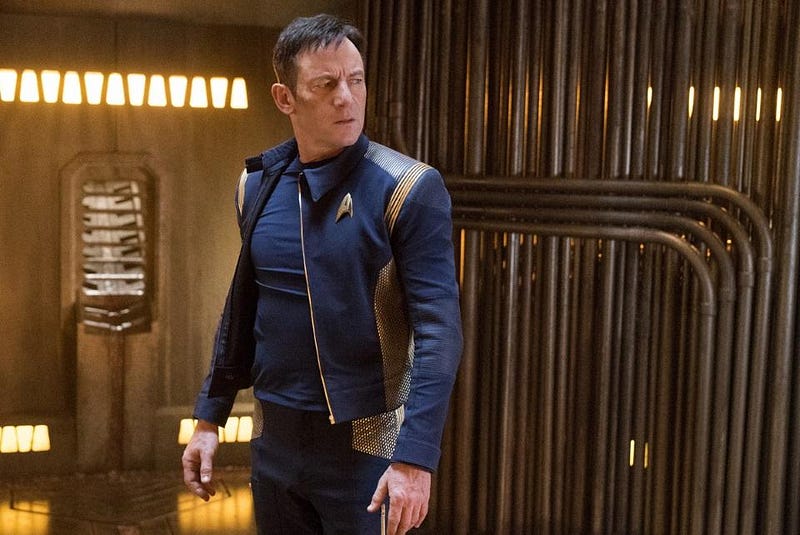
Recap: In the aftermath of the destruction of multiple Klingon ships by the Discovery near the Federation outpost, Captain Lorca is reprimanded by the Admiral for blowing the cover of their “secret weapon.” Discovery is pulled off of combat duty, as other Federation ships promise to pick up the slack. Lorca’s frailty, his photosensitive eyes, is brought to light. As Lorca takes a shuttlecraft back to Discovery, he’s intercepted by Klingons, captured, and thrown into prison, where he meets the annoying and cowardly Harry Mudd, and our old buddy from the USS Shenzou: Lieutenant Ash Tyler, who’s being held as the Klingon Captain’s sex slave.
Back on Discovery, Saru is in charge, as Stamets, Burnham, and Dr. Culber (Wilson Cruz) try and figure out what’s going on with the tardigrade and the spore drive with the mycelium network. After the capture of Lorca, it becomes clear they’ll need to jump in and jump out to save him, but the toll the jumping has on the tardigrade makes this a questionable method on two fronts: it’s unreliable (particularly if it kills the tardigrade), and it’s potentially unethical. Burnham expresses her reservations, but Saru’s need to find and protect the captured Captain takes precedence. They jump, and the tardigrade collapses and goes into its hibernation state.
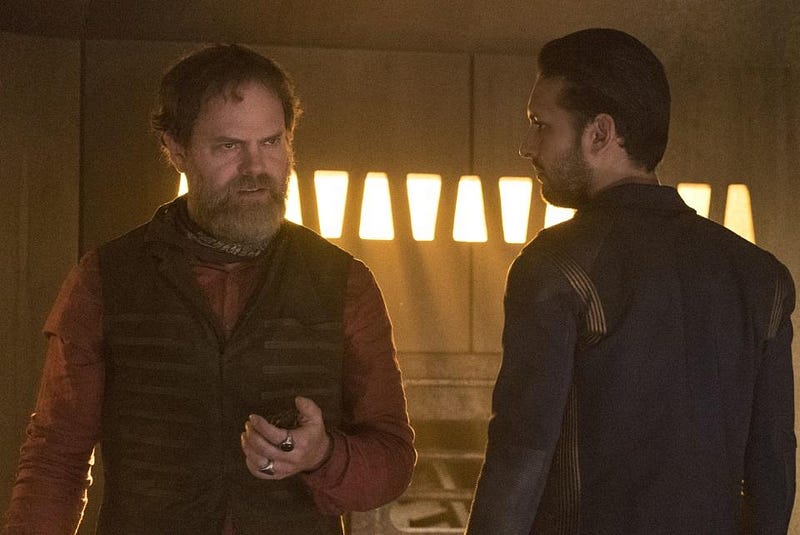
Lorca, after being tortured (including with bright lights), figures out that it was Mudd who betrayed him, and that Mudd’s been feeding information to the Klingons. Lorca conspires with Tyler to overpower the two Klingons who come to torture/murder them, and they escape, killing about seven Klingons in the process. In addition, the Klingon captain, the same one who tortured Lorca, is blinded and wounded in the escape attempt. Whether this is setting up a revenge storyline or is simply poetic justice, it works here.

Saru orders the crew to rehydrate the tardigrade and force it to jump again. Meanwhile, Stamets, Burnham and others figure out that humans could carry out the same process, with proper modifications, that the tardigrade carries out. After Lorca’s stolen Klingon Raider-ship is identified, he and Tyler are beamed aboard the Discovery, and they spore drive-jump back to safety, on Saru’s orders. Unbeknownst to Saru, the tardigrade wasn’t used, but rather Stamets put his own body at risk to do the jump. At the end, Burnham and others release the tardigrade back into the wild of deep space, and Saru has a deep moment of self-awareness, where he comes to the conclusion that we must make choices, that some choices are mistakes, but we learn from them and try to do right at every turn.
All in all, it’s probably the best episode of Discovery so far.
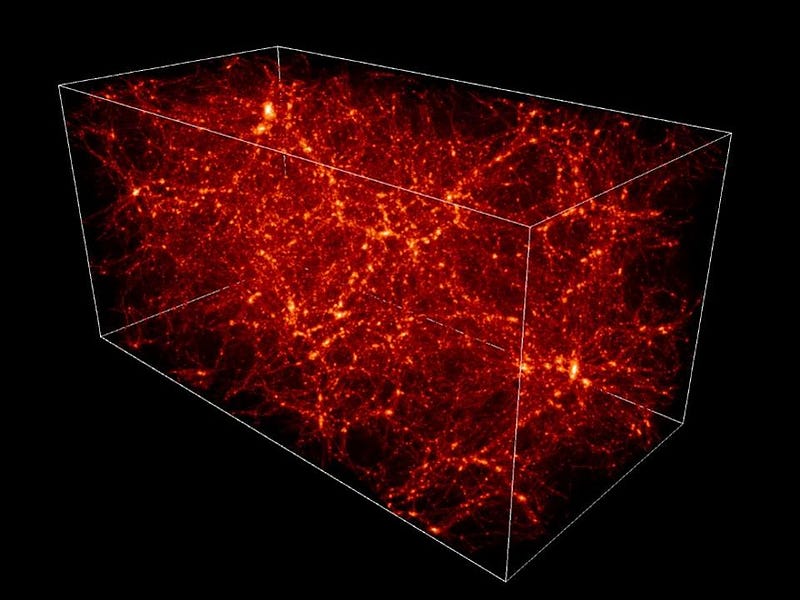
Science: The mycelium network throughout the galaxy, and its tardigrade-navigated, symbiotic connection is going to have to be a “suspension of disbelief” that we’re all going to have to go with. It’s not very satisfying, because it doesn’t fit the Star Trek mold of novel technologies that may, in fact, be physical impossibilities. When it came to some of the most outrageous technologies of Star Treks past, things like Warp Drive, Subspace Communication, and Artificial Gravity, the way they were handled was to invent some new technological terms that were loosely tied to known scientific concepts. The mechanisms by which the technologies worked were deliberately left vague, so that when the correct science figured out how to make such a technology possible, a retconned explanation could then be worked into the Star Trek Universe.
By declaring the exact mechanism by which the science of the “spore drive” works in Star Trek, though, there’s now no room for that. Instead, we’ve got:
- a network of fungal spores permeating the galaxy (even though fungi are far too evolutionarily advanced for that to be likely),
- giant, hairy, swiftly-moving space tardigrades that thrive in deep space (even though real tardigrades need to go into suspended animation to survive there),
- and a tardigrade-mycelium connection that maps out the whole galaxy, faster-than-light, and enables instantaneous travel throughout it by DNA splicing and transfer.
That’s not just an incredible idea, it’s a completely non-credible idea. But now it’s canon in the Star TrekUniverse, which is a shame for those of us who prefer a credible science base in our science fiction.
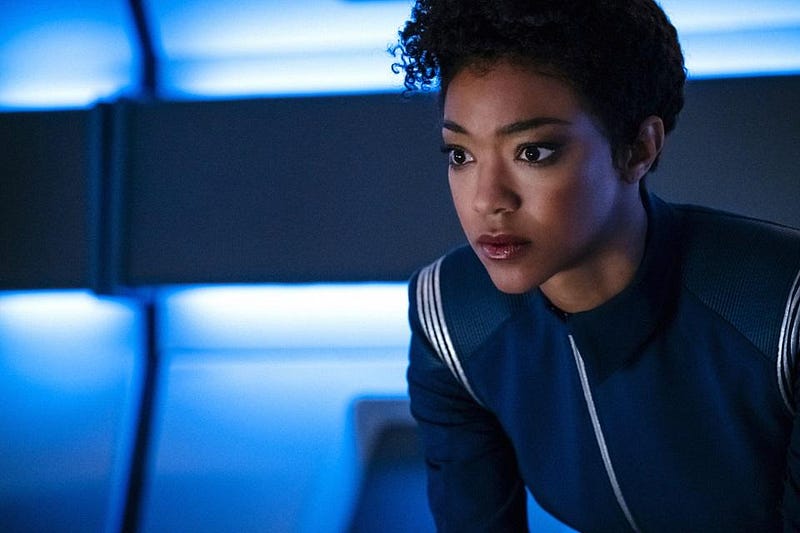
But when it comes to this episode, the portrayal of Michael Burnham is very much in line with how frustrating so many actual scientists are, especially when it comes to their pet ideas. Burnham is convinced that the alien tardigrade is sentient, that using the “spore drive” with the tardigrade harms the creature, and that further uses would potentially kill it. After Lorca’s kidnapping, Saru takes command, determined to locate and rescue his captain, and to succeed where Burnham failed. Understandably, he demands that the spore drive be used, consequences be damned. When Burnham meets with Saru, she expresses her concerns for the welfare of the tardigrade, and Saru asks her what you might expect any reasonable person to ask a scientist: can you prove your theory?
She can’t, and she says she can’t. But she has all sorts of evidence that her theory is valid, that she simply fails to present! She knows that the tardigrade’s vital signs dropped the last time the spore drive was used. She knows that the tardigrade suffered brain and tissue damage from it. She knows that its behavior changed, and it acted like a wounded animal when it went to drink water after its last use. And she says… nothing. But that’s okay; many, many scientists are terrible and unconvincing communicators, even about their own, valid science!
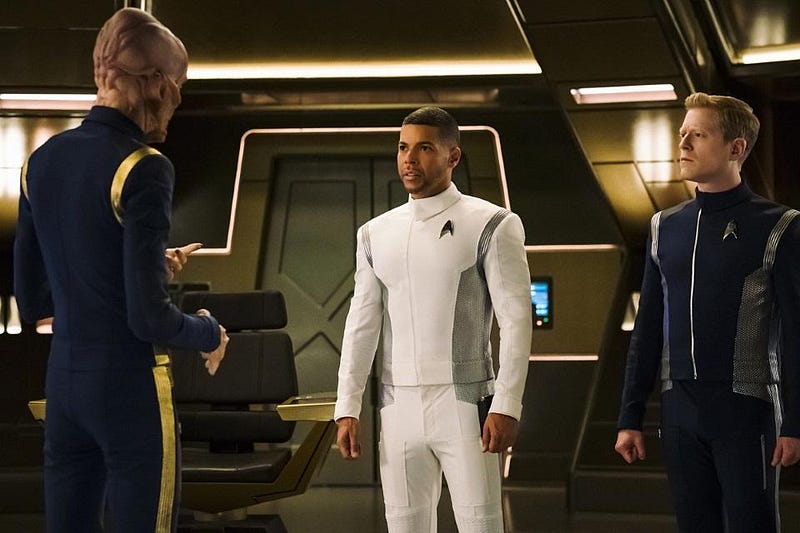
When Stamets, Burnham, Culber, and Tilly, all working together, reach the same conclusion, the plan switches to using a willing human, one who can consent, instead of the tardigrade to power the spore drive. Why not? They share more than 50% of their DNA, and by splicing mycelium DNA into their own, they can symbiotically communicate exactly as you’d hope. The only problem with that is that pretty much all living organisms share 50% or more of their DNA with humans and with each other, from strawberries and bananas to platypi to sharks to paramecia. The tardigrade/human compatibility is no doubt true, but it’s also nothing special. Still, humans are sentient, and that is something special. It’s actually quite satisfying to see Stamets’ technology, and his willingness to test his tech out on himself, pay off in such a spectacular fashion.
Right and Wrong: For the first time in this series, Star Trek: Discovery doesn’t back down from exploring the tough ethical questions. And by exploring, I mean not only having them come up as part of the plot, but watching the characters explore the possibilities on both sides, and make the ethical choice.

When Lorca is kidnapped, he refuses to throw his cellmates under the bus as Mudd is so quick to do, even when one of them kind of deserves it. Instead, he collaborates with the others he identifies as his allies to help them out and escape. He refuses to leave them behind, even if it would greatly up his odds of success. And he has no reservations about deceiving those who would betray him (Mudd again) for their own gain, a great combination of doing both the smart thing and the right thing.
When Burnham realizes the harm that the spore drive has on the tardigrade, she advocates on behalf of this creature that cannot advocate for itself. When Saru, in command of the USS Discovery, fails to follow her advice, she neither mutinies, nor throws a fit, nor does whatever she wants anyway, but stands down. Even when she’s commanded to confine herself to her quarters, she actually does; it’s the first time she doesn’t sneak off to do what her conscience tells her is right.

Meanwhile, other officers rise to the challenge. Stamets uses himself as a guinea pig to test his human-based spore drive idea. Culber makes his position known and advocates strongly for doing the right thing, telling the Commander the futility of attempting to de-hibernate the tardigrade. And Saru, initially so unsure of himself that he had the computer monitor his decisions to stack them up against the computer’s 20/20 hindsight, recognizes the value that others bring, and realizes the greatest thing of all from being in a position of power: the ability to learn from your experience to do better as time goes on. For the first time, we’ve had an episode of Discoverywhere the entire crew can be proud of themselves.
Conclusion: After last week’s episode, I was terrified that Star Trek: Discovery was never going to develop a moral compass. I was afraid that its characters wouldn’t exhibit personal growth or deep thought. That right-and-wrong would be a grey area in everything they did. And that the temptation to use technology for an expedient end would overwhelm the need to use it for the benefit of all intelligent living creatures. By those metrics, this episode was a tremendous improvement.
This episode was also cheeky in a way I didn’t expect, with off-color language (that I’d never thought I’d see on CBS!) making it onto the show, with Culber and Stamets having a lovers’ quarrel, and with Tilly going over-the-top in her role as the audience surrogate. There were callbacks to Star Trek moments from previous series as well, from interspecies human-Klingon mating (remember Worf’s first wife?) to the appearance of Mudd, predating his three appearances in the original and animated series. Returning the tardigrade to space and having it fly off through the mycelium network was the first satisfying ending we’ve had to an episode of Discovery so far.
Of course, seeing the photosensitive Lorca being tortured by the Klingon Captain (there were only three lights this time) brought back the iconic memories of Picard being tortured by the Cardassians. Additionally, the on-the-nose juxtaposition of the Discovery crew being unwilling to torture a tardigrade (beyond a certain point, at least) with the Klingons wantonly torturing and murdering/raping their prisoners of war finally helps us see the Federation as the “good guys” at least in some ways.
After last week, I was very skeptical that I’d continue watching the show for very long. But this one, for the first time, gave me reason to hope that the Federation, and the crew of Discovery, might live up to the ideals of Starfleet after all. Just maybe, as the show progresses, we’ll find out that Burnham deserves to wear that uniform after all.
Ethan Siegel is the author of Beyond the Galaxy and Treknology. You can pre-order his third book, currently in development: the Encyclopaedia Cosmologica.





